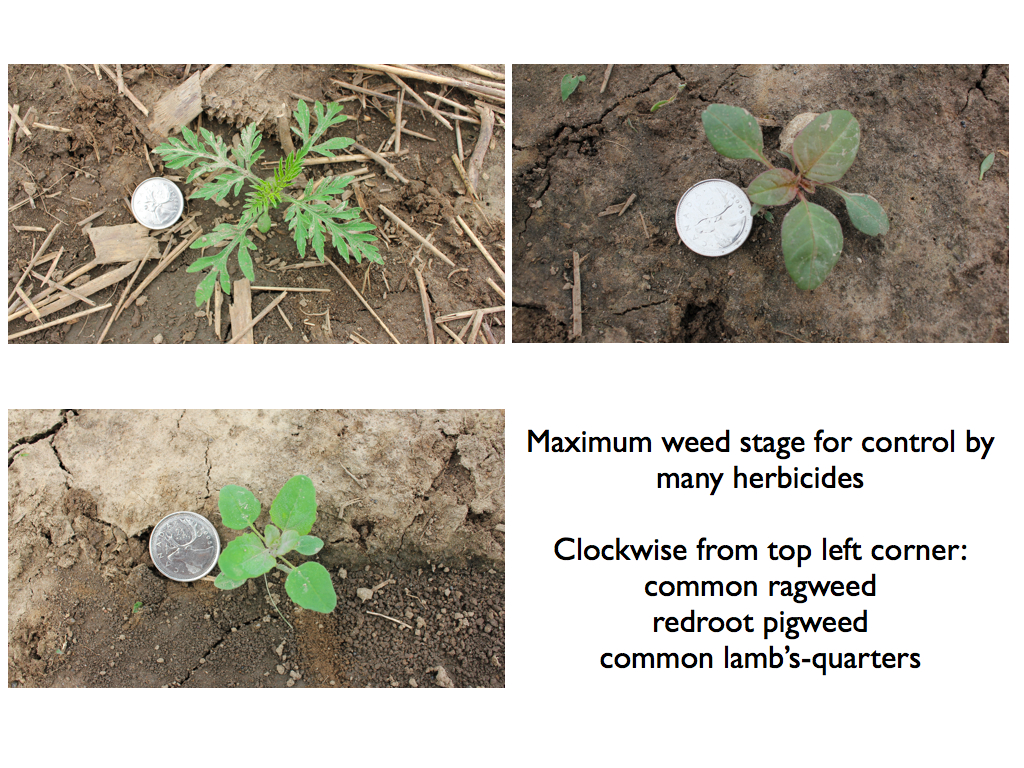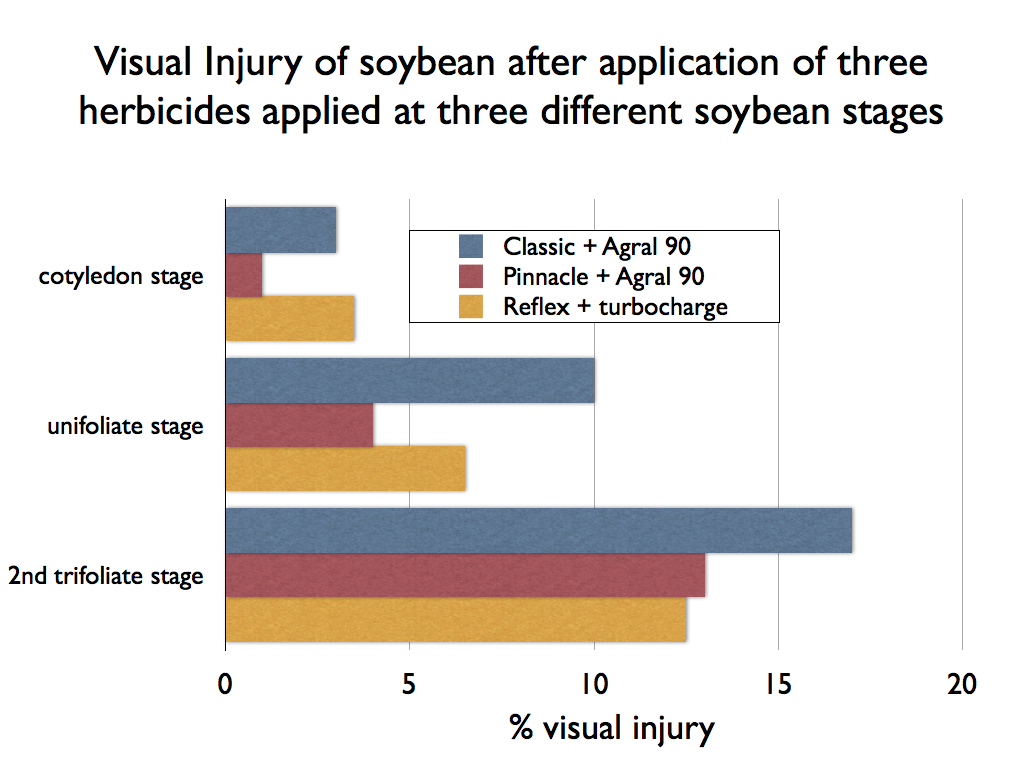co-authors: Dr. Clarence Swanton and Dr. Francois Tardif
You may be faced with a scenario where there is an abundance of weeds at or near the maximum leaf-stage for effective control, yet the soybean crop is not at the growth stage specified on the product label. As a producer or consultant, do you focus on targeting the weeds when at their labeled growth stage or do you wait until the crop reaches the labeled growth stage?
The Department of Plant Agriculture (University of Guelph) in partnership with OMAFRA conducted a series of field trials with the following objectives:
- To identify if there is an increased risk of crop injury when applying post-emergent broadleaf soybean herbicides prior to the 1st trifoliate growth stage specified on the product label.
- To identify if there is a negative yield impact by applying post-emergent broadleaf soybean herbicides prior to the 1st trifoliate growth stage.
Methodology
Trials were conducted at the Elora Research Station in 2006 and 2007. Three common post-emergent broadleaf soybean herbicides were applied at 3 different soybean growth stages (cotyledon, unifoliate and 2nd trifoliate) and at two different application rates (normal field rates and twice the normal field rate). Visual crop injury, plant population, plant biomass and yield data were taken and compared to an untreated, weed-free control.
Results
- Soybean tolerance to all three herbicides was general greater when applications were made prior to the 1st trifoliate stage (See Figure 1).
- When all herbicide treatments were averaged, crop injury at the cotyledon, unifoliate and 2nd trifoliate stage was 2.5%, 7% and 14% respectively.
- Visual injury was temporary and no longer apparent by the end of July.
- Soybean yields were unaffected by herbicide applications made prior to the 1st trifoliate stage of soybean.
Conclusion
Broadleaf weeds emerging before or with the crop are extremely competitive and should be controlled when they are small (prior to the 8 leaf stage of weed growth in general). Based on two years of data, it would appear that if a herbicide is applied prior to the labeled crop growth stage there is no increased risk of crop injury and no impact on soybean yields.
Update, May – 2017: The findings in this study were used to support a change to the Classic herbicide label. Below is the new wording for application timing of Classic herbicide(registration #: 25433):



